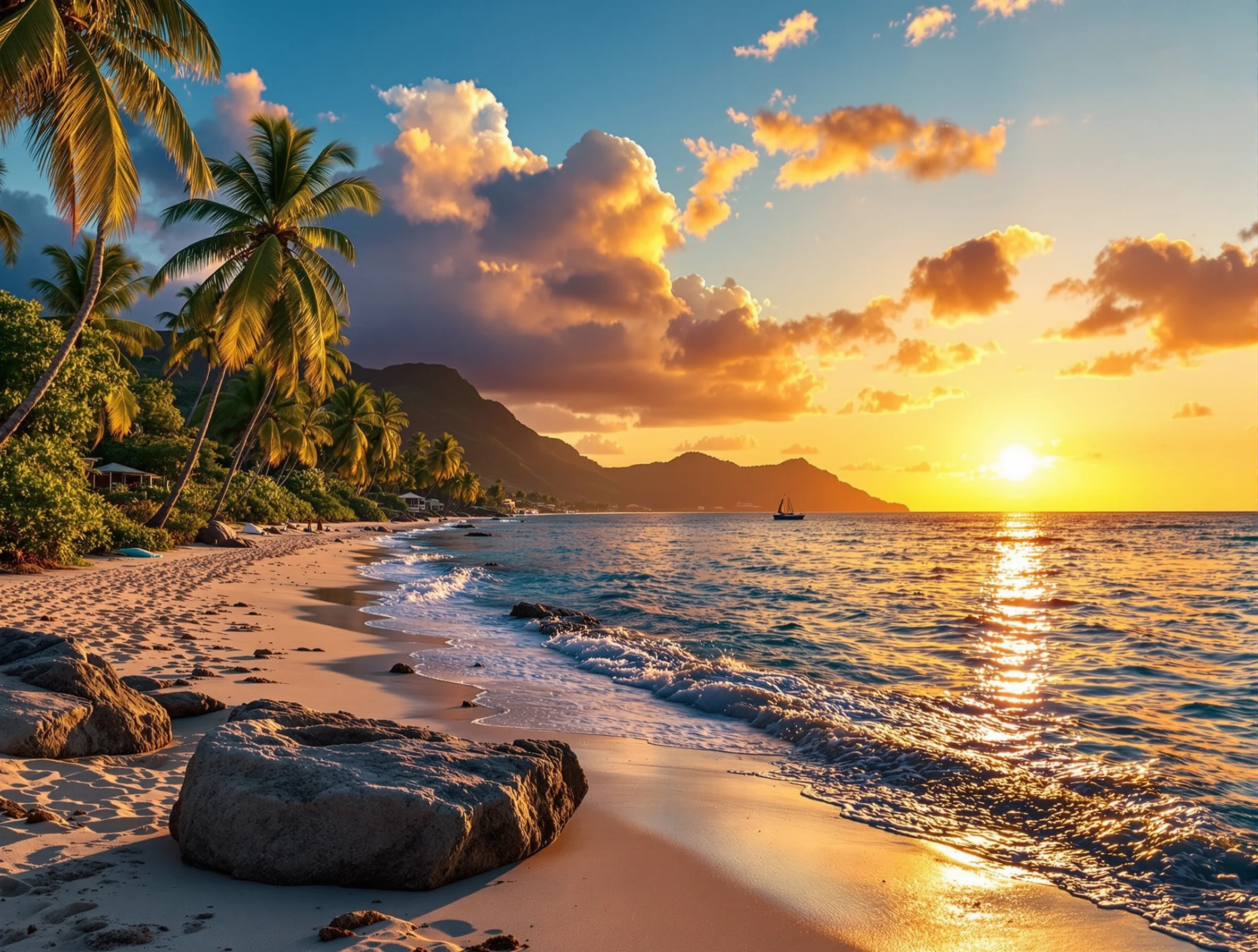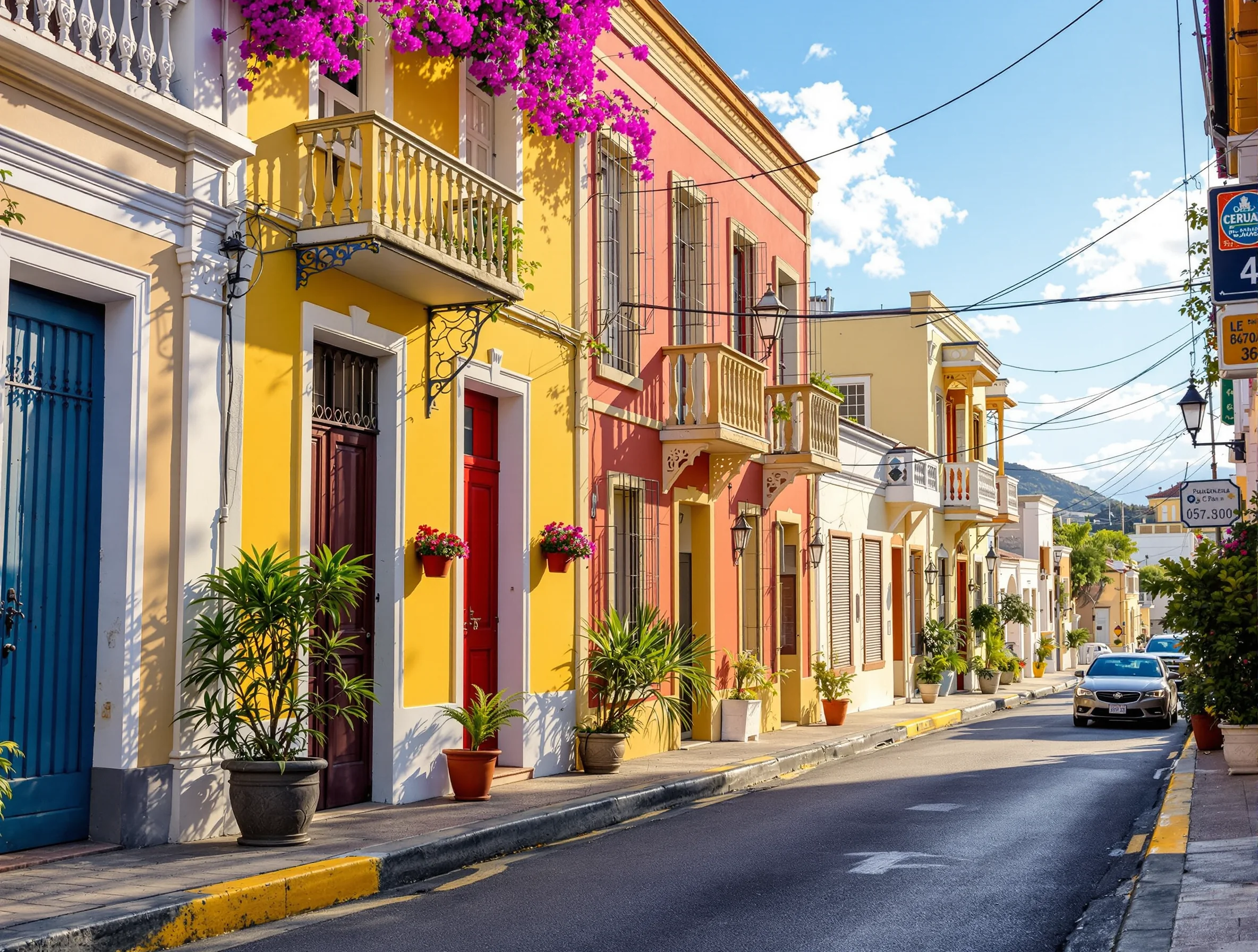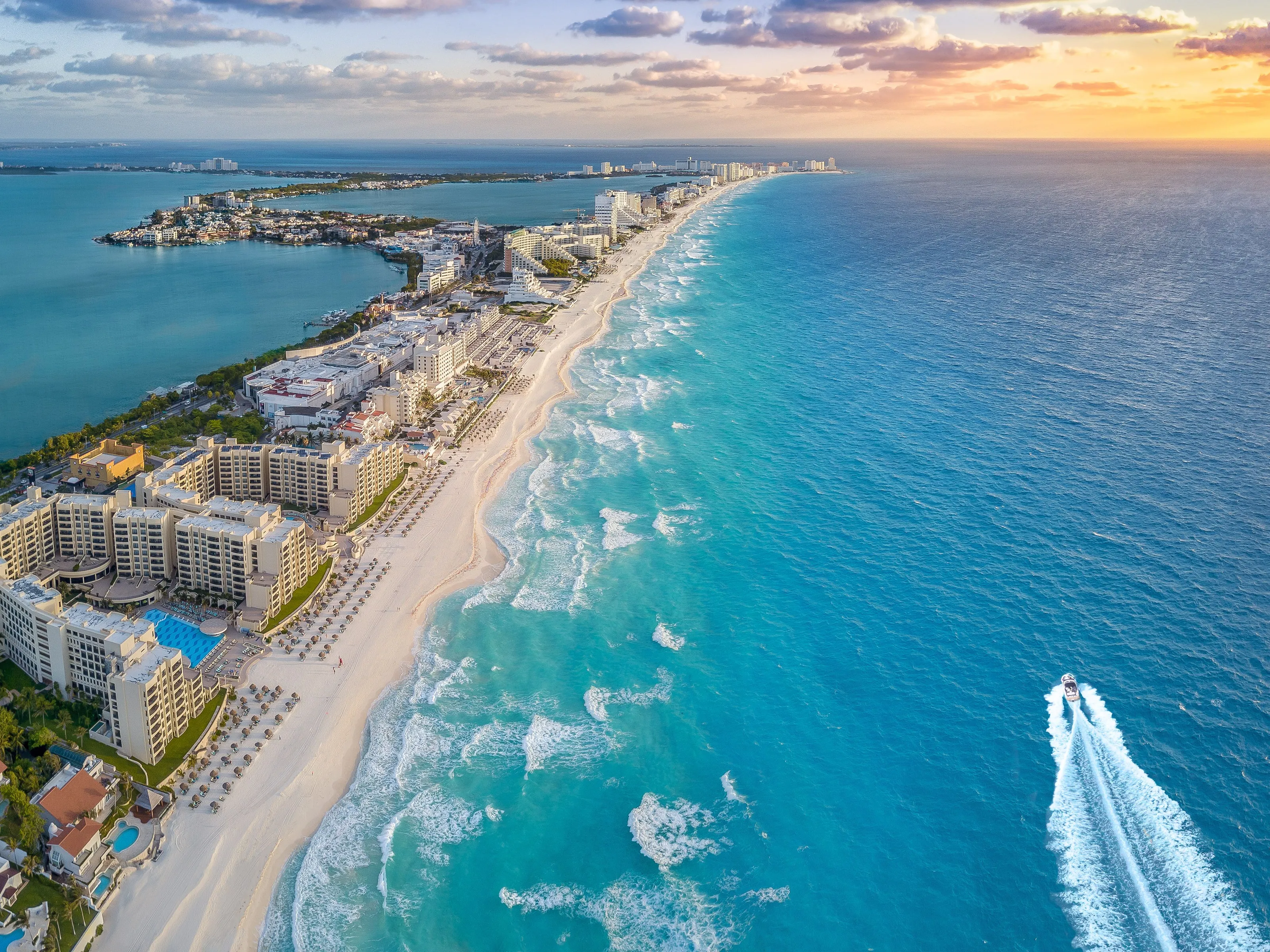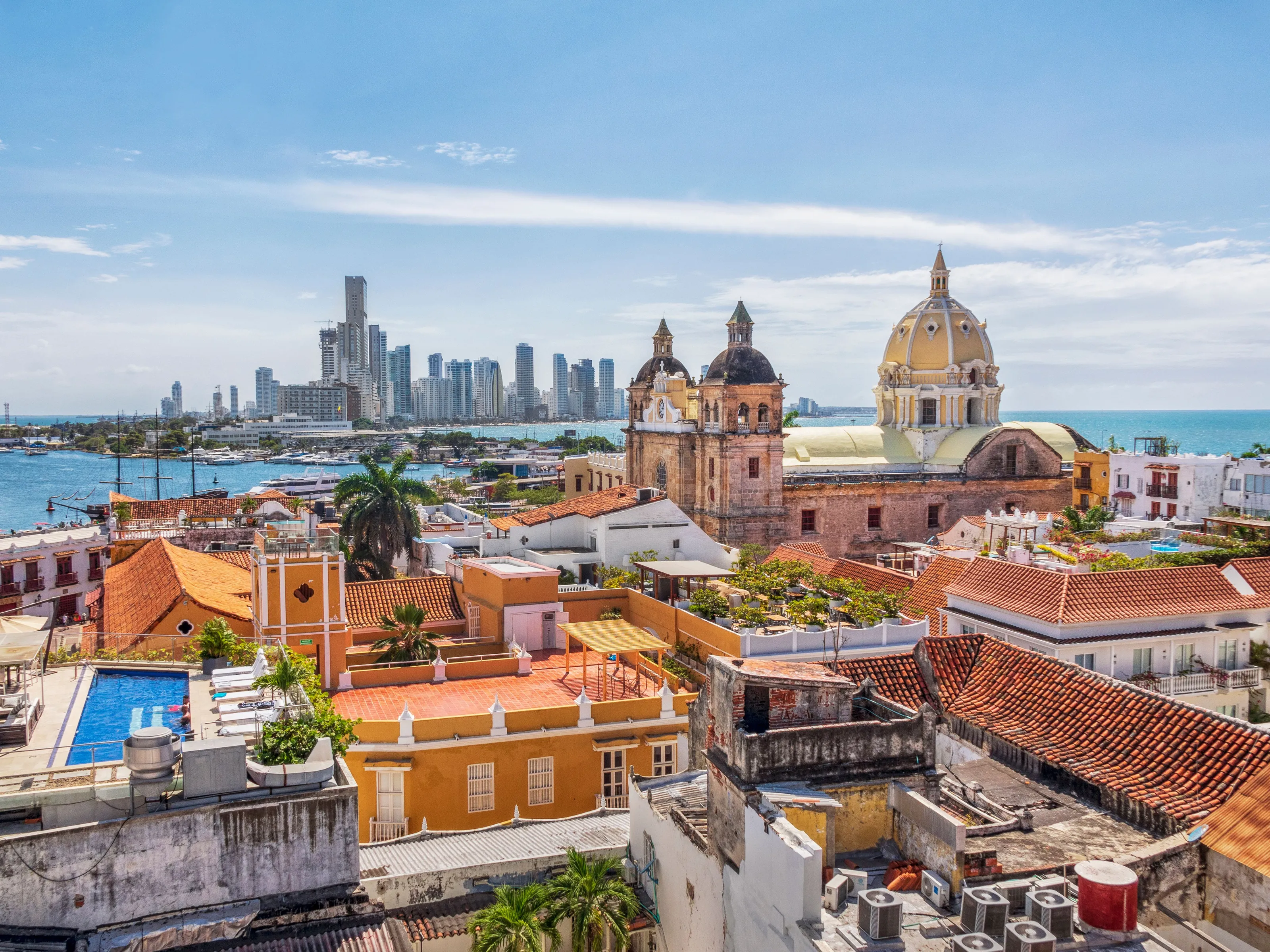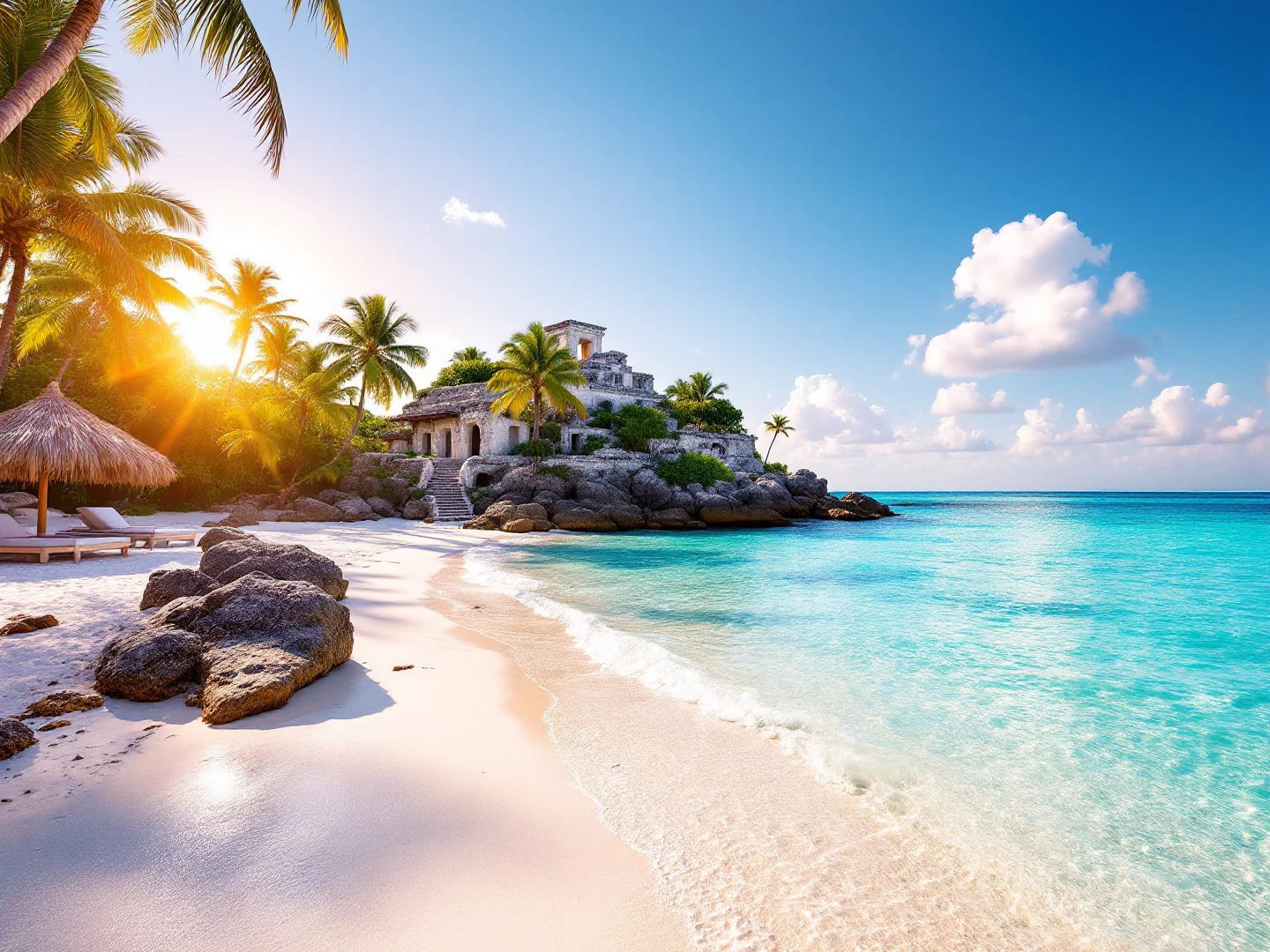Why Visit Punta Cana?
Punta Cana reigns as the gateway to the Dominican Republic—the Caribbean's most visited country with over 10 million annual visitors—where the resort area itself draws around 6.5 million tourists to its 32 kilometers of powdery white-sand beaches where swaying coconut palms frame impossibly turquoise waters. This Dominican Republic resort hub on the eastern tip of Hispaniola delivers the quintessential tropical all-inclusive experience—mega-resorts with unlimited food and drinks, oceanfront pools with swim-up bars, water sports included, and entertainment teams keeping guests busy from morning beach volleyball to evening shows. The Hotel Zone stretches along Bávaro and Punta Cana beaches where most properties offer direct beach access, though the best swimming is at Bávaro (calmer waters) while Punta Cana proper has more wave action.
Yet beyond resort gates, the Dominican Republic reveals itself: excursions to Saona Island's pristine beaches and natural pools where starfish gather in shallow turquoise waters (full-day catamaran tours $81–$103), Hoyo Azul cenote's electric-blue swimming hole at Scape Park ($96), and buggies tearing through countryside and cacao plantations ($70–$96). Colonial history awaits in Santo Domingo (2.5 hours west)—the Americas' first European city preserves cobblestone Zona Colonial with Diego Columbus' palace and the oldest cathedral in the New World (UNESCO site). Golf courses designed by Jack Nicklaus and P.B.
Dye compete for attention, while the coral reefs and shipwrecks of the Caribbean attract divers (PADI courses $378–$486). Nightlife centers on resort entertainment and Coco Bongo Punta Cana ($76–$97 for Vegas-style shows), though most guests embrace the all-inclusive lifestyle and rarely leave their property. Food spans buffet extravaganzas to à la carte resort restaurants serving Italian, Asian, and Dominican fusion—venture off-resort to Arena Gorda's local restaurants for authentic sancocho stew and mofongo.
Weather delivers year-round warmth (26-31°C), though hurricane season June-November brings occasional storms and the risk of rain. December-April sees peak crowds and prices, while May and November offer shoulder-season deals. With most European and North American passport holders receiving visa-free entry (tourist card included in airfare), English spoken widely in resorts, and packages starting from $972/week including flights, Punta Cana perfects the Caribbean all-inclusive formula—effortless tropical escape where the hardest decision is beach or pool.
What to Do
Beaches & Water
Bávaro Beach
Punta Cana's most famous stretch—32km of white sand and calm turquoise waters protected by offshore reefs. Most all-inclusive resorts line this area. Water is shallow and gentle, perfect for families. Palm trees provide natural shade. Beach vendors sell coconuts, cigars, and excursions (bargain hard or politely decline). Sunrise walks are magical. Some sections can have seaweed depending on season and currents—resorts clean daily. Water sports often included at resorts: kayaking, paddleboarding, snorkeling gear, Hobie cats. Public beach access exists but most visitors stay at resort beaches.
Saona Island Day Trip
Postcard-perfect island 90 minutes by catamaran—part of Parque Nacional del Este. Full-day tours ($81–$103) include open bar on boat, beach time on Saona's powdery sands, lunch buffet, and stop at natural pool where starfish gather in knee-deep turquoise water. Tours run 7am-5pm with hotel pickup. Saona has no development—just palm trees, white sand, and crystal water. Can get crowded (100+ tourists) but still beautiful. Bring biodegradable sunscreen, camera, and patience for boat boarding. Book through resort or reputable operators. Speedboat options available (faster, bumpier). Romantic couples' private catamaran tours cost more ($216+).
Hoyo Azul & Scape Park
Electric-blue cenote (limestone sinkhole) with 14-meter-deep freshwater pool perfect for swimming. Part of Scape Park adventure complex (from ~$$129 / $130 for full admission including cenote, ziplines, cave exploration). The blue color is stunning—bring waterproof camera. Steps down to cenote (moderate fitness needed). Water is cool (24°C) and refreshing after hot jungle walk. Add-on activities: zipline course over jungle canopy, cultural Taíno village, cave with Lucayan petroglyphs. Allow 3-4 hours. Located 15 min from resort zone. Book online for discounts. Biodegradable sunscreen only. Can get crowded midday—go early.
Adventures & Excursions
Buggy & Countryside Tours
Dusty, exhilarating ATV/buggy rides through Dominican countryside—muddy trails, cacao plantations, local villages, and beach stops. Half-day tours ($70–$96 3-4 hours). Includes safety briefing, helmets, and usually a stop at organic farm to taste cacao, coffee, and mamajuana (local rum). You will get muddy—bring clothes you don't mind ruining and closed-toe shoes. Single or double buggies available. Some tours add cenote swimming or Macao Beach stop. Minimum age usually 18 to drive, kids as passengers. Popular excursion for adventure seekers. Book reputable operators—read reviews about equipment quality.
Santo Domingo Day Trip
The Americas' first European city (2.5 hours west, founded 1496). UNESCO Zona Colonial preserves cobblestone streets, Diego Columbus' Alcázar palace ($5), Catedral Primada (oldest cathedral in Americas, free), and Fortaleza Ozama fortress. Full-day tours $92–$124 with guide, transport, and lunch. See where Columbus' son lived, walk Las Damas (first paved street), visit Pantheon. Add Los Tres Ojos limestone caves ($2). Modern Santo Domingo has 3M people—traffic can be intense. Tours worthwhile for history buffs wanting culture beyond beach. Self-drive possible but long day. Most tourists skip it for beach time.
Snorkeling & Diving (Coral Reefs)
Caribbean coral reefs and shipwrecks offer decent snorkeling and diving. Catalina Island (1.5 hours by boat) has best reefs with tropical fish, walls, and The Wall dive site ($103–$130 day trip). Punta Cana house reef snorkeling is mediocre—most good spots require boat trips. PADI Open Water courses $378–$486 (3-4 days). Wreck dives include Astron and Atlantic Princess ships. Visibility 15-25 meters depending on weather. Best diving December-April. Whale watching season January-March ($96–$119). Many resorts include snorkel gear and beach reef access, but true coral health here is fair—not world-class like Cozumel or Bonaire.
All-Inclusive Experience
Resort Life & Amenities
Punta Cana perfected all-inclusive—most resorts include unlimited food (buffets + à la carte restaurants), alcoholic drinks, water sports (kayaks, paddleboards, snorkel gear), pools, entertainment, and beach access. Typical schedule: breakfast buffet 7-11am, lunch noon-3pm, snacks 3-5pm, dinner 6-10:30pm with reservations needed for specialty restaurants (Italian, Asian, steakhouse). Swim-up bars, beach bars, lobby bars pour drinks 10am-midnight. Entertainment teams run beach volleyball, aqua aerobics, dance classes. Evening shows: acrobatics, live music, theater. Kids' clubs, teen clubs, and babysitting available at family resorts. Adults-only resorts popular for couples. Tips: reserve à la carte restaurants at check-in (fill up fast), tip bartenders $1–$2/drink for better pours, bring refillable water bottles, check if Wi-Fi costs extra.
Golf Courses
Punta Cana rivals Caribbean golf destinations with 12+ championship courses. Famous designs: Punta Espada (Jack Nicklaus, cliffside holes, green fees $319), Corales (Tom Fazio, PGA Tour host, $319), La Cana (P.B. Dye, $254). Most courses have ocean views and trade winds. Packages combine multiple rounds. Caddies customary (tip $20–$$30). Courses open year-round. Book tee times in advance peak season (Dec-April). Some resorts include golf or discounts. Club rentals available. Best conditions November-April. Consider early tee times to avoid heat. Half the experience is Caribbean scenery.
Gallery
Travel Information
Getting There
- Airports: PUJ
Best Time to Visit
December, January, February, March, April
Climate: Tropical
Budget
Excludes flights
Visa Requirements
Visa-free for EU citizens
💡 🌍 Traveler Tip (November 2025): Plan ahead: December is coming up and offers ideal weather.
Practical Information
Getting There
Punta Cana International Airport (PUJ) is the Caribbean's busiest—direct flights from Europe (8-11 hours), North America (2.5-5 hours), and Latin America. Resort transfers usually included in packages or arranged by resort ($35–$$60 for private van, less for shared). Taxis to hotel zone cost $30–$$50 depending on distance. Many visitors book all-inclusive packages with flights from home country.
Getting Around
Most visitors never leave their resort—all-inclusive nature keeps guests on property. Taxis expensive ($40–$$80 resort to resort) with no meters—negotiate before. Resort shuttles connect some properties. Rental cars available ($35–$60/day) if planning multiple excursions or Santo Domingo trip—roads decent but aggressive driving. Uber not available. Excursions include hotel pickup. Public buses exist but impractical for tourists. Walking outside resorts not recommended—distances far, sidewalks rare, heat intense.
Money & Payments
Dominican Peso (DOP, RD$) but US Dollar widely accepted at resorts and tourist areas (often preferred). Exchange rate fluctuates—check XE.com. Resorts often quote prices in USD. ATMs at resorts and towns dispense pesos. Credit cards accepted at resorts. Bring small USD bills for tips and off-resort purchases. Tipping: $1–$$2 per drink at bars, $5–$10 for housekeeping, $10–$20 for butlers, 10% restaurants if service charge not included. All-inclusive tipping debated—many tip for better service.
Language
Spanish is official but English widely spoken at resorts and tourist areas. Resort staff mostly bilingual. Off-resort Spanish essential. Basic phrases helpful: gracias (thank you), por favor (please), cuánto cuesta (how much). Resort entertainment often in Spanish and English. Communication easy at resorts, challenging in local areas.
Cultural Tips
All-inclusive culture: guests rarely leave resort—embrace it or plan excursions to experience Dominican life. Tipping improves service (bartenders remember). Beach vendors persistent—firm "no gracias" needed, don't engage unless buying. Reservations for à la carte restaurants required (book at check-in). Dress codes: some restaurants require long pants/closed shoes for men. Bring reef-safe sunscreen (protect coral). Hurricane season (June-Nov) requires travel insurance with weather coverage. Dominicans are friendly—learn basic Spanish phrases. Haggle at markets and with beach vendors (offer 50% asking price). Don't drink tap water. Electricity 110V (US plugs). Wi-Fi often included but can be slow—digital detox opportunity.
Perfect 5-Day Punta Cana Itinerary
Day 1: Arrival & Resort Orientation
Day 2: Saona Island
Day 3: Adventure Day
Day 4: Beach & Water Sports
Day 5: Departure
Where to Stay in Punta Cana
Bávaro Beach
Best for: Main hotel zone, most resorts, calm waters, family-friendly, best beaches
Punta Cana proper
Best for: Southern resorts, more waves, quieter, luxury properties, golf courses
Cap Cana
Best for: Ultra-luxury, exclusive resorts, marina, golf, upscale, secluded
Uvero Alto
Best for: North of Bávaro, remote, adults-only resorts, pristine beaches, quieter
Frequently Asked Questions
Do I need a visa to visit Punta Cana?
What is the best time to visit Punta Cana?
How much does a trip to Punta Cana cost per day?
Is Punta Cana safe for tourists?
What are the must-see attractions in Punta Cana?
Popular Activities
Top-rated tours and experiences in Punta Cana
Ready to Visit Punta Cana?
Book your flights, accommodation, and activities

